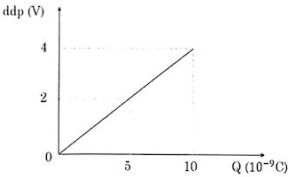Questões Militares
Para efomm
Foram encontradas 1.030 questões
Resolva questões gratuitamente!
Junte-se a mais de 4 milhões de concurseiros!
SEA-FEVER
I must down to the seas again, to the lonely sea and the sky, And all I ask is a tall ship and a star to steer her by, And the wheel's kick and the wind's song and the white sail's shaking, And a grey mist on the sea's face and a grey dawn breaking. I must down to the seas again, forthe call of the running tide Is a wild call and a clear call that may not be denied; And all I ask is a windy day with the white clouds flying, And the flung spray and the blown spume, and the seagulls crying. I must down to the seas again to the vagrant gypsy life, To the gull's way and the whale's way where the wind's like a whetted knife; And all I ask is a merry yarn from a laughing fellow-rover, And quiet sleep and a sweet dream when the long trick's over.
By John Masefield (1878-1967)
According to the text:
I - The journey was quite quick _______ the road was clear.
II - The meeting has been canceled _______ the strike.
III - I drove at a steady 50 mph ________ save fuel.
IV- There's no reason _______ we shouldn't be friends.
V- _______ all her qualifications, she's useless at the job.
Many ofthe same questions that ________ about coal-powered propulsion _______ of the Internet of Things (loT) today: What's wrong with the traditional way; how will this benefit my fleet; why do we need to malee this change? They _______ all good questions, and they ______ a very natural human interest in the three areas that should matter most in deciding whether to use any maritime technology: safety, effectiveness and cost. The biggest challenges to IoT adoption _______. In large part, this is due to the ready availability of high-performance data collection.
(Adapted from: Sea Technology, December 2018).
I - I gather you've had some problems with our secretary.
II - Are you having a headache?
III - Hadn't you better check to see if the baby is all right?
IV - She knows Jacob since 1981.
V - I'd rather to stay here than to go out tonight.
By the end of our first two weeks in Holland, we had fallen head over heels for the country. It's a historic, visual, artistic and cultural feast that is compact and easy to get around thanks to its efficient trains, buses and bike routes.
(Adapted from: Sail Magazine, August 2018.)
Considering the previous passage, the underlined phrase 'head over heels' is closest in meaning to:
Charter, Sail, Repeat: new ventures and old favorites in the Greek Isles
By Zuzana Prochazka
On our first day, we sailed southwest nearly 50 miles 011 a nice beam reach, winding through Kolpos Idras, or the Hydra Gulf. By the end, we were running out ______ daylight, so we pulled ___ the miniscule harbor on Spetses Island. I read the guides twice, but the most I got was a warning about tl1e inner harbor being only 4ft deep, which made me suck in my stomach as we crept in. The harbor turned ______ to be a mix of private yachts, commercial boats and fishing craft, and as we were looking round I happened to notice black clouds _____ the horizon. The wind was also now picking _______, so out we went again, making a U-turn back to the bay to drop anchor with the other cruisers who'd opted to skip the draft headaches. We made it just before the gale overtook us.
(Adapted from: Sail Magazine,March 2020).
I. Computing systems often deliberately _____ classify sensitive information.
II. Since then, every time I felt stressed, _____ aligned, or dissatisfied, I would refer back to them to get the source of my frustration." ·
III. My son-in-law was talking and acting in an ____ appropriate manner at the party.
IV. Crooks sometimes ____ run the police.
V. She had difficulty in writing anything but scribbles because she was ____ patient.
VI. Her latest article is quite ____ similar from the previous one.
I-The pandemic forestalled additional improvement ofthe feeder vessel.
II-The ship will enable a depletion of road freight and road hazards.
III-The vessel will be scrapped straight away.
IV-The Norwegian shipyard went bankrupt due to the changed global outlook.
V-The ship will be fitted with outdated controls and navigation systems.
Suponha que um capacitor de placas paralelas, com ar entre as placas, em princípio descarregado, seja carregado por uma bateria durante um certo tempo. Verifica-se (de algum modo) que os valores do potencial e da carga elétrica em uma das placas estão relacionados conforme mostra a figura abaixo. Em seguida, insere-se um dielétrico de constante dielétrica K=2 entre as placas do capacitor carregado.
Qual é a energia armazenada entre as placas do capacitor com o dielétrico?

Considere um corpo Cúbico de lado 20 cm, massa de 20 g e uniformemente carregado, localizado nas proximidades da superfície terrestre. Não despreze o ar, mas considere sua densidade igual a 1.2 kg/m3. Se na região existe um campo elétrico uniforme, voltado para cima, de modulo 52 N/C, qual deve ser a carga para que o corpo fique suspenso em equilíbrio no ar?
Dado g = 10.,0 m/s2.

